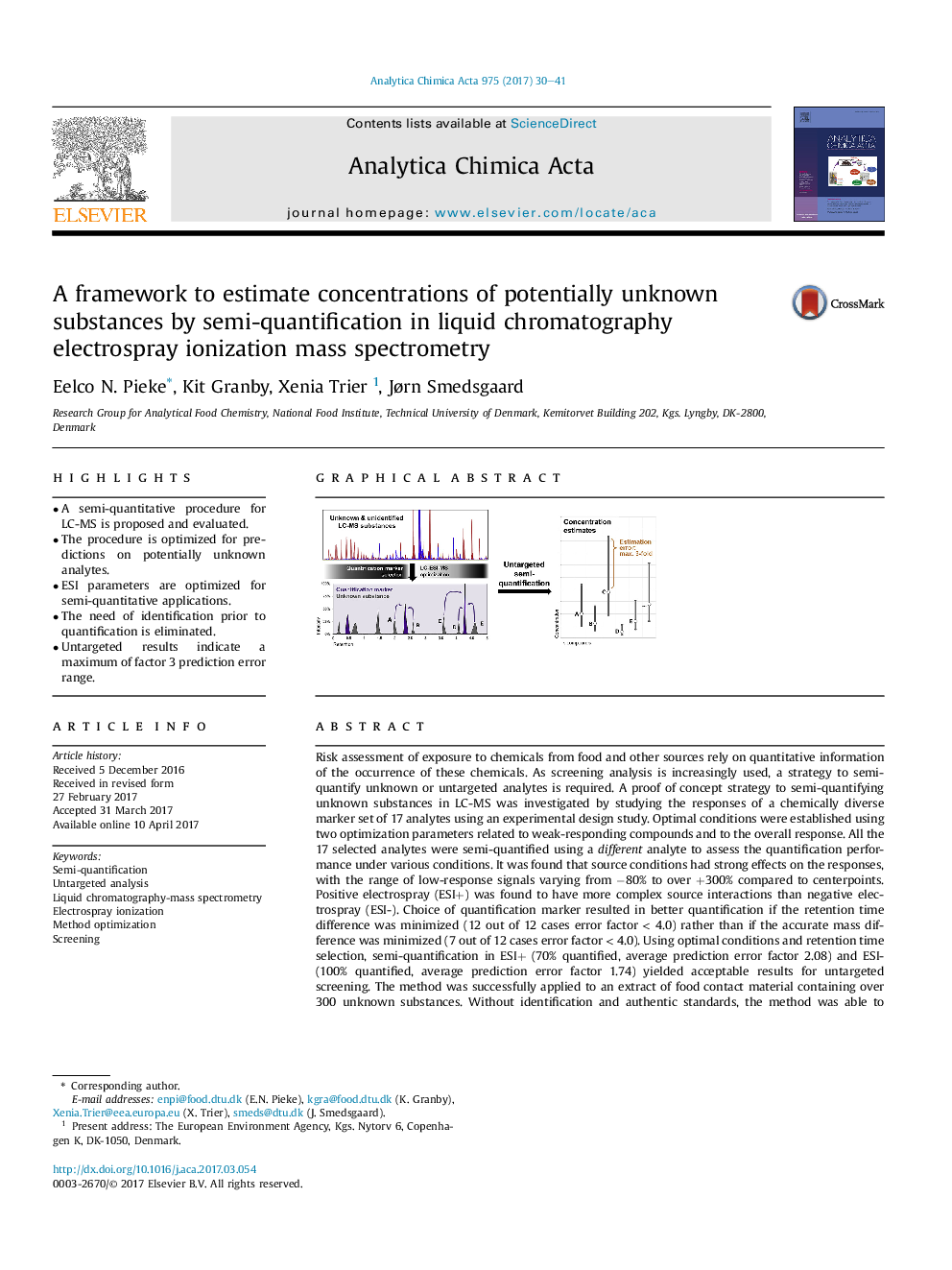| کد مقاله | کد نشریه | سال انتشار | مقاله انگلیسی | نسخه تمام متن |
|---|---|---|---|---|
| 5130834 | 1490857 | 2017 | 12 صفحه PDF | دانلود رایگان |

- A semi-quantitative procedure for LC-MS is proposed and evaluated.
- The procedure is optimized for predictions on potentially unknown analytes.
- ESI parameters are optimized for semi-quantitative applications.
- The need of identification prior to quantification is eliminated.
- Untargeted results indicate a maximum of factor 3 prediction error range.
Risk assessment of exposure to chemicals from food and other sources rely on quantitative information of the occurrence of these chemicals. As screening analysis is increasingly used, a strategy to semi-quantify unknown or untargeted analytes is required. A proof of concept strategy to semi-quantifying unknown substances in LC-MS was investigated by studying the responses of a chemically diverse marker set of 17 analytes using an experimental design study. Optimal conditions were established using two optimization parameters related to weak-responding compounds and to the overall response. All the 17 selected analytes were semi-quantified using a different analyte to assess the quantification performance under various conditions. It was found that source conditions had strong effects on the responses, with the range of low-response signals varying from â80% to over +300% compared to centerpoints. Positive electrospray (ESI+) was found to have more complex source interactions than negative electrospray (ESI-). Choice of quantification marker resulted in better quantification if the retention time difference was minimized (12 out of 12 cases error factor < 4.0) rather than if the accurate mass difference was minimized (7 out of 12 cases error factor < 4.0). Using optimal conditions and retention time selection, semi-quantification in ESI+ (70% quantified, average prediction error factor 2.08) and ESI- (100% quantified, average prediction error factor 1.74) yielded acceptable results for untargeted screening. The method was successfully applied to an extract of food contact material containing over 300 unknown substances. Without identification and authentic standards, the method was able to estimate the concentration of a virtually unlimited number of compounds thereby providing valuable data to prioritize compounds in risk assessment studies.
274
Journal: Analytica Chimica Acta - Volume 975, 4 July 2017, Pages 30-41